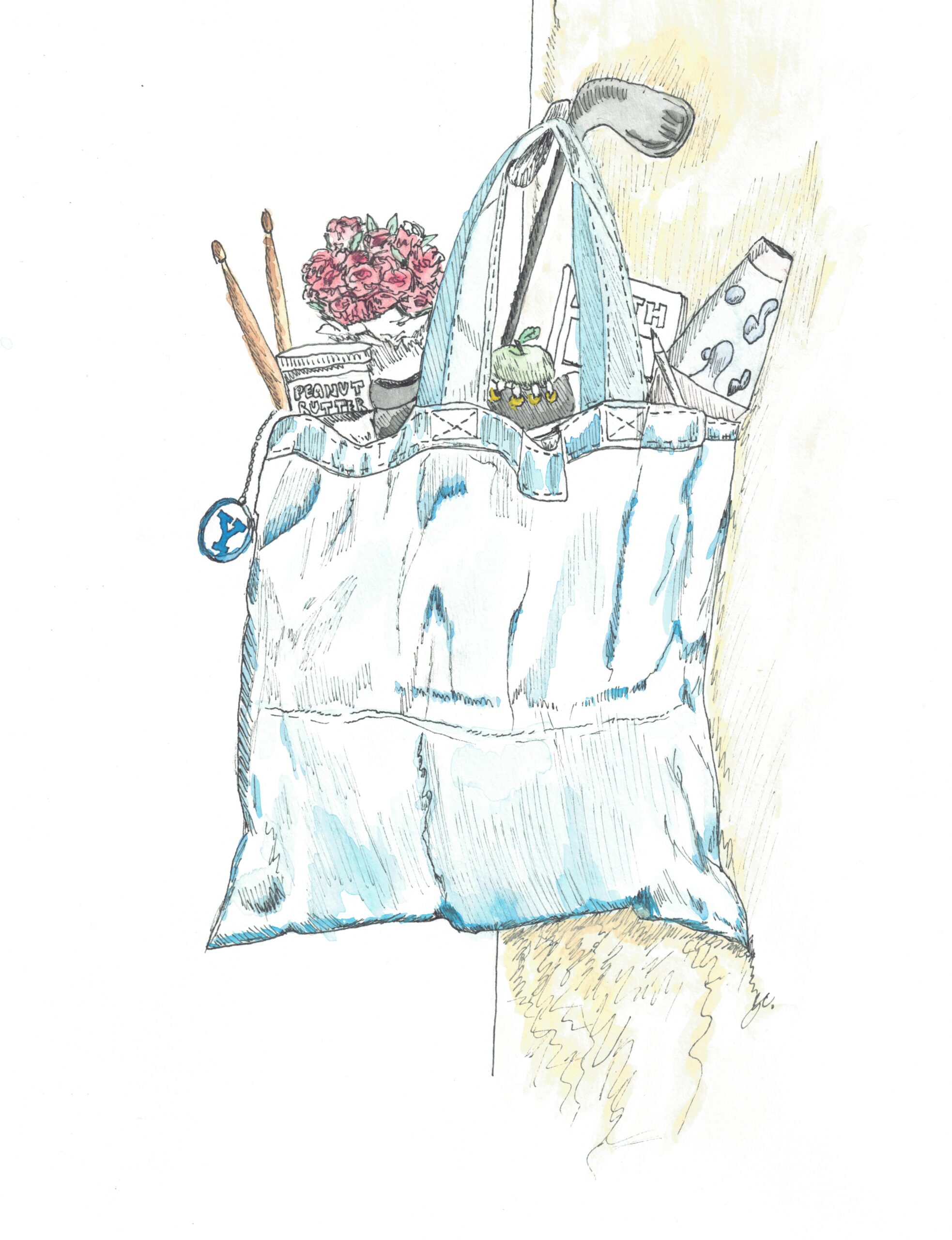
Sasha Cabral
I am sitting in the Beinecke. At first, I notice the silence, then the rare books locked behind glass. Finally, my eyes drift to the students themselves. More specifically, what they’ve brought with them, their companions.
Tote bags. Everywhere.
Some resting on benches, some slumping against the walls. Others spilling open on the tables with their contents on full display. One bag rests as a placemat for a vanilla latte and a copy of the New Yorker. Another hangs square and shapely off the side of an office chair, with “Shakespeare & Company” stitched in blue. A third drapes over the staircase railing: a handout from the Yale University Art Gallery at the Extracurricular Bazaar.
The tote bag has become Yale’s most visible epidemic — its only competition being the Yague. They are the true Yale uniform, beating out both the Campus Customs-stitched Y sweater and the blazers that lay around Bass Library post-interviews. The bags swing off of shoulders from Ashley’s to Atticus. While a backpack suggests preparedness, and a purse suggests commitment, tote bags advertise something entirely different: a kind of “effortless cool.”
“I didn’t try, but notice how I didn’t try so perfectly,” the bags scream, clinging onto their carriers’ linen pants and knit sweaters. But that’s the irony of it: the “effortless cool” so confidently displayed by tote baggers is meticulously staged. Every tote is a coded message about the owner: a science internship they completed over the summer, an art museum they just visited, even their favorite book genre. Carrying a bookstore tote? Respectable. Sporting a designer tote bag? Either enviable or impractical, depending on the observer. A Yale freebie? Slightly embarrassing, unless it’s executed with enough detachment. And for those who carry plain, non-graphic totes? That might be proud minimalism … or a forgetful person’s emergency purchase.
But epidemics beget competition, and only the fittest — or most fashionable — survive. Like fashion gurus, tote bag carriers are constantly evaluating whether they’re over-toted or under-toted. Suddenly, the humble carryall has become a hierarchy. Being spotted carrying the same bag to a seminar twice is now equivalent to repeating an outfit. My friend, an avid tote bagger, says she’s always worried she’ll run into someone carrying the same bag but better dressed.
Despite all their semantics and semiotics, tote bags are universal for a reason. The criterion for becoming a ubiquitous item is practicality. Unlike leather satchels and backpacks — which, for some reason, have become far too expensive these days, totes are cheap and long-lasting. They are sturdy enough for textbooks, easy to clean and less cumbersome than backpacks. And they still satisfy a young, aspiring college student’s most important style requirement: self-expression.
So here in the Beinecke, surrounded by books older than the New Yorker itself — let alone the tote bags bearing its name — I am sure that totes are here to stay. And as long as we clutch these flimsy bags as though they are part of our identity, they will announce our arrival long before we have the chance to speak.







